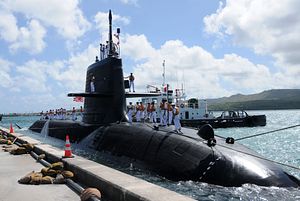On October 1, 2015, the Japan Ministry of Defense (JMOD) implemented a major reorganization. The reorganization effort focuses on streamlining a policy- and decision-making processes on two of its key functions — operation of the Japan Self-Defense Forces (JSDF) and acquisition of defense equipment.
In particular, the establishment of the Acquisition, Technology and Logistics Agency (ATLA) — Bouei Soubi-cho in Japanese — is a move that has been much anticipated among those who are interested in seeing more robust cooperation between the United States and Japan in defense technology. Ever since Abe administration announced the new three principles for Japan’s defense equipment transfers, many have pointed out the need for the MOD to streamline its own defense acquisition process, strategize Japan’s defense technology policy, and facilitate private sector efforts to pursue collaboration with non-Japanese firms.
The report issued on September 30 — the eve of ATLA’s official launch — by a JMOD advisory group on defense technology and equipment transfer directly speaks to this need. Released with the anticipation of ATLA being launched not too long after its publication, the report discusses in detail the critical importance for Japan to have a coherent defense industrial policy, so that Japan can optimize defense industrial cooperation and equipment transfer to benefit Japan’s strategic interests.
Although not addressed in the report, another powerful driver for the establishment of ATLA was the grim fiscal reality that Japanese defense industry faces in the foreseeable future. Even though Japan’s defense spending has been steadily increasing since Prime Minister Shinzo Abe assumed office in 2012, there is a consensus, as articulated in the latest National Defense Program Guidelines, that R&D and acquisition are both unlikely to see a considerable budget increase anytime soon. If Japan is serious about maintaining an indigenous defense technological base that is robust enough to prevent Japan from growing completely dependent on foreign defense technology, pursuing a greater rate of return by expanding the volume of sales or better integrating into the global defense equipment R&D and production network are the only options.
Driven by these incentives, the newly established ATLA has five core missions: (1) manage JMOD’s acquisition programs more efficiently, (2) enhance international cooperation in the area of defense equipment, (3) conduct cost-effective and timely research and development (R&D), (4) maintain and strengthen indigenous defense technological base, and (5) pursue greater cost-saving measures. In order to execute these missions, the organizations and offices that previously were spread across the JMOD, including the Technical Research and Development Institute (TRDI) and the Equipment Procurement and Construction Office (EPCO), were merged into ATLA under the commissioner, who has a seniority equivalent to the rank of vice defense minister in the JMOD hierarchy.
The new ATLA has a couple of immediate tasks at hand. As the advisory group report rightly points out, Japan, always being on the receiving end of advanced technology (often from the United States), has no guidelines on transferring its own advanced technology to the foreign countries that will partner with Japan on their defense acquisition. Neither does Japan have a clear set of guidelines on how to classify various defense technologies, including identifying which technologies are the most valuable — “crown jewels” as U.S. export control officials call them — and cannot be transferred overseas. These guidelines need to be established as quickly as possible in a close coordination with the Ministry of Economy, Trade, and Industry (METI), which continues to be a regulatory agency for Japan’s export controls, including defense exports.
Moreover, ATLA needs to decide how to balance its diverse missions. Acquisition program management, indigenous R&D, and promotion of the existing technologies and equipment are very different tasks, each of which requires very different approaches. How ATLA will balance these missions with its limited number of staff and finite budget is a challenge of its own.
Coincidentally, there are two pending cases where ATLA can potentially demonstrate its value. One is Australia’s next-generation submarine acquisition bid, in which Japan has found itself in a very tough completion with France and Germany. The other is the ongoing discussion between Japan and India on the sale of Japan’s US-2 aircraft. If ATLA can somehow play a useful role in tipping these cases in Japan’s favor, it will be off to a very good start.

































